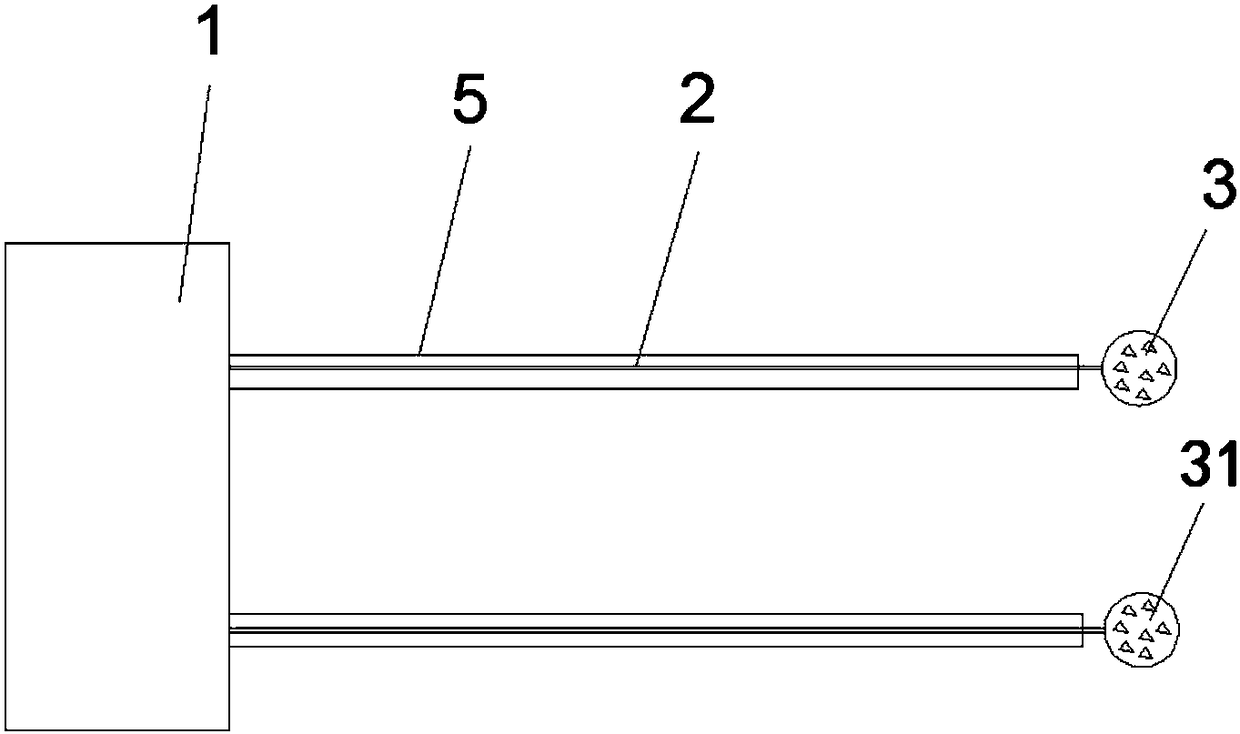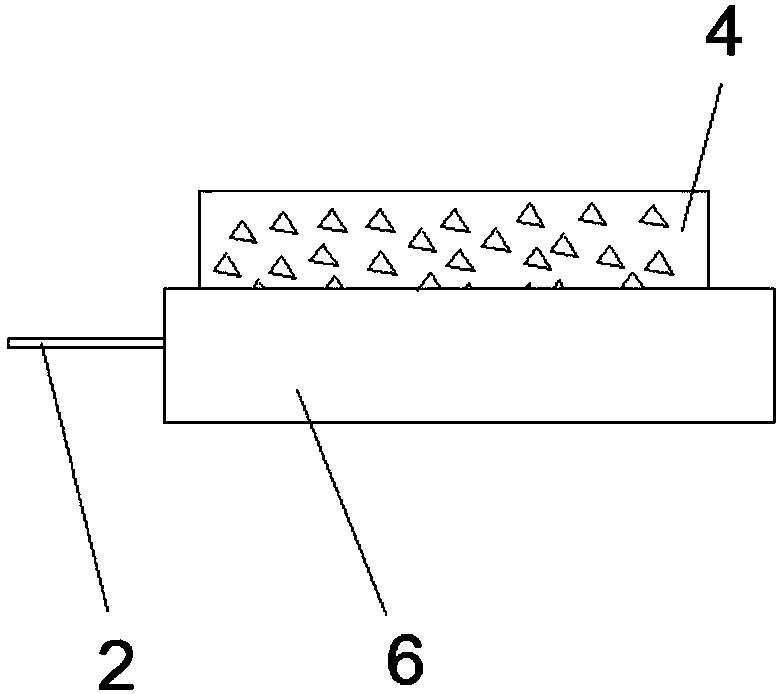a nerve electrode
An electrode and nerve technology, applied in the field of biomedical engineering, can solve the problems of difficult to achieve effective soft tissue fusion, poor biocompatibility, rigid electrode materials and soft tissue mechanical properties and other problems
- Summary
- Abstract
- Description
- Claims
- Application Information
AI Technical Summary
Problems solved by technology
Method used
Image
Examples
Embodiment 1
[0037] Example 1: Preparation of neural electrodes
[0038] Include the following steps:
[0039] (1) bonding the three-dimensional porous graphene electrode 4 to the silver wire through silver glue, and heating to 70° C. to completely cure the silver glue, and the thickness of the three-dimensional porous graphene electrode 4 is 0.5 mm;
[0040] (2) Soak the connecting part of the silver wire and the three-dimensional porous graphene electrode 4 in the PDMS solution, vacuumize to remove the air bubbles in the mixed solution, and heat the PDMS at 70° C. for 6 hours to solidify the PDMS to obtain a protective substrate 6 with a thickness of 2 mm;
[0041] (3) The three-dimensional porous graphene electrode 4 with the protective substrate 6 and the metal titanium electrode are respectively connected to the current generating device 1 through silver wires to prepare a nerve electrode.
Embodiment 2
[0042] Example 2: Preparation of neural electrodes
[0043] Include the following steps:
[0044] (1) bonding the three-dimensional porous graphene electrode 4 and the copper wire through silver glue, and heating to 50° C. to completely solidify the silver glue, and the thickness of the three-dimensional porous graphene electrode 4 is 2 mm;
[0045] (2) Soak the connecting part of the copper wire and the three-dimensional porous graphene electrode 4 in the PDMS solution, vacuumize to remove the air bubbles in the mixed solution, and keep the PDMS at 100° C. for 1 hour to solidify the PDMS to obtain a protective substrate 6 with a thickness of 0.5 mm. ;Before the PDMS is cured, a heart-shaped mold can be gently pressed on the graphene surface to cause a heart-shaped deformation. After the PDMS is completely cured, a recessed electrode can be obtained to better fit the heart area;
[0046] (3) The three-dimensional porous graphene electrode 4 with the protective substrate 6 and...
Embodiment 3
[0047] Example 3: Preparation of neural electrodes
[0048] Include the following steps:
[0049] (1) bonding the three-dimensional porous graphene electrode and the silver wire through silver glue, and heating to 60° C. to completely solidify the silver glue, and the thickness of the three-dimensional porous graphene electrode 4 is 1 mm;
[0050] (2) Quickly soak the connecting part of the silver wire and the three-dimensional porous graphene electrode 4 in the polyurethane solution, vacuumize to remove the air bubbles in the mixed solution, and place it at room temperature for 24 hours to solidify the polyurethane, and the obtained protective substrate 6 is about 1mm thick.
[0051] (3) The three-dimensional porous graphene electrode 4 with the protective substrate 6 and the metal gold electrode are respectively connected to the current generator 1 through silver wires to prepare a nerve electrode.
PUM
| Property | Measurement | Unit |
|---|---|---|
| thickness | aaaaa | aaaaa |
| thickness | aaaaa | aaaaa |
| thickness | aaaaa | aaaaa |
Abstract
Description
Claims
Application Information
 Login to View More
Login to View More - R&D
- Intellectual Property
- Life Sciences
- Materials
- Tech Scout
- Unparalleled Data Quality
- Higher Quality Content
- 60% Fewer Hallucinations
Browse by: Latest US Patents, China's latest patents, Technical Efficacy Thesaurus, Application Domain, Technology Topic, Popular Technical Reports.
© 2025 PatSnap. All rights reserved.Legal|Privacy policy|Modern Slavery Act Transparency Statement|Sitemap|About US| Contact US: help@patsnap.com


